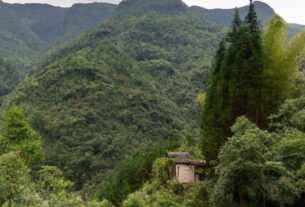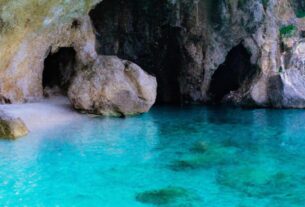Socotra Island, nestled in the Indian Ocean, is a natural gem boasting an impressive array of biodiversity. This enigmatic island is home to over 700 plant species that cannot be found anywhere else on the globe. Not only are Socotra Island plants fascinating to behold, but their significance in the global ecosystem is also immense.
Socotra Island Plants: A Biodiversity Hotspot
Description of Socotra Island’s Diverse Plant Species
With approximately 700 plant species, more than a third of which are endemic, Socotra Island showcases a rich and diverse flora that has evolved over millions of years. The plant species on the island are divided into two categories: endemic and non-endemic.
The endemic plant species found exclusively on Socotra Island make it a biodiversity hotspot. Some of the most captivating endemic plants include the dragon’s blood tree, Socotra frankincense, and the Socotra pomegranate.
Explanation of Why Socotra Island is Considered a Biodiversity Hotspot
Socotra Island’s extraordinary flora and fauna have attracted the attention of scientists and conservationists worldwide. The island’s isolation, unforgiving climate, and geological history have created a unique environment that supports an exceptional range of endemic species. Recognizing its outstanding biodiversity, Socotra Island has been designated as a UNESCO World Heritage Site and is regarded as a globally significant biodiversity hotspot.
Importance of Preserving Socotra Island’s Plant Species
Preserving Socotra Island’s plant species is of utmost importance for both the island’s ecosystem and the global community. These plants provide a habitat for rare and endangered animals, maintaining the delicate balance of the food chain. Additionally, the medicinal properties of Socotra Island plants hold promise for the development of new drugs to combat diseases.
In conclusion, Socotra Island is a biodiversity haven, boasting unique and diverse flora. The island’s plants play a crucial role in the global ecosystem, making their conservation a matter of great significance. Now, let’s delve deeper into the fascinating world of Socotra Island’s biodiversity hotspot.
Medicinal Properties of Socotra Island Plants
Not only are Socotra Island plants visually striking, but they also possess remarkable medicinal properties that have been utilized in traditional medicine for centuries. Let’s explore the incredible medicinal potential of these plants.
Overview of Medicinal Properties
Socotra Island plants exhibit a wide range of medicinal properties, including anti-inflammatory, antibacterial, antifungal, and antioxidant qualities. These invaluable traits have been employed to treat various ailments, such as skin disorders, respiratory issues, and digestive problems.
Specific Examples of Traditional Medicine
Among the well-known plants used in traditional medicine on Socotra Island is the Dragon’s Blood tree. Its sap has been applied to heal wounds, manage skin infections, and alleviate stomach ulcers. The Socotra cucumber tree, with its edible fruit, has been used to address digestive problems and fever. Additionally, the Socotra Desert Rose is known to treat respiratory issues and skin disorders.
Potential for Further Research
The field of Socotra Island’s plant medicine remains largely unexplored. As the demand for natural remedies continues to grow, there is vast potential for further research on the medicinal properties of these remarkable plants. Uncovering more about these properties could lead to the discovery of novel drugs for a range of diseases.
To conclude, Socotra Island’s plants possess unique medicinal properties that have been harnessed by traditional medicine for centuries. The potential for further research is immense, offering a promising avenue for the development of new medicinal treatments.
Conservation Efforts for Socotra Island Plants
Explanation of the Conservation Efforts in Place to Protect Socotra Island Plants
Socotra Island plants face multiple threats, including climate change, habitat destruction, and overgrazing. The Socotra Conservation and Development Programme (SCDP), established in 1999, strives to address these challenges and ensure the long-term survival of Socotra’s extraordinary flora.
The SCDP focuses on protecting and preserving the island’s plant species by establishing protected areas, conducting scientific research, and collaborating with local communities to promote sustainable land use practices. The program also emphasizes raising awareness among both residents and visitors about the importance of conserving Socotra’s biodiversity.
Challenges Faced in Conserving Socotra Island’s Unique Flora
Despite the ongoing efforts of the SCDP, conserving Socotra Island’s unique flora remains a significant challenge. Limited resources and funding hinder the program’s ability to effectively carry out conservation work. Furthermore, the lack of enforcement of conservation laws leads to illegal logging and overgrazing, compromising the preservation of these plant species.
Another challenge arises from the escalating tourism on the island, which increasingly pressures the fragile ecosystem. Tourists often disregard regulations put in place to safeguard the plants and their habitats, causing further harm to the island’s flora.
Importance of Continued Conservation Efforts
Continued conservation efforts for Socotra Island plants are of paramount importance. These plants play a crucial role in the global ecosystem and contribute significantly to the region’s culture and economy. Preserving Socotra’s biodiversity not only secures opportunities for eco-tourism and sustainable development but also safeguards the unique flora for future generations.
In conclusion, the conservation of Socotra Island plants relies on the collective efforts of the SCDP, local communities, and visiting enthusiasts. By joining forces to protect this biodiversity hotspot, we can ensure the survival of Socotra’s unique flora for the benefit of all.
Socotra Island Plants and Climate Change
Climate change poses a severe threat to the survival of Socotra Island’s unique flora, resulting in significant impacts on the island’s plant species. Rising temperatures and changing rainfall patterns are causing shifts in plant habitats, altering their growth patterns and distribution.
How Climate Change is Affecting Socotra Island Plants
One visible impact of climate change on Socotra’s plant species is the modification of flowering and fruiting times. For example, the Socotra Island cucumber tree now fruits earlier than before, affecting the animals that rely on the fruit as a food source. Additionally, rising temperatures have led to the loss of vital habitats like rocky cliffs, further endangering the plant species that inhabit them.
Specific Examples of How Plant Species are Being Impacted
The iconic Socotra Island dragon’s blood tree is reportedly under threat from increased temperatures. The scarcity of the tree’s resin, used in traditional medicines and dyes, coupled with challenges in reproduction, suggests that the changing environment is taking a toll on its survival. Additionally, the Juniperus procera, another tree species found on the island, faces the risk of drought due to climate change.
Importance of Addressing Climate Change to Protect Socotra Island Plants
Climate change is a global issue with far-reaching consequences. Nevertheless, the unique plant species found on Socotra Island are particularly vulnerable, and their conservation is crucial for preserving the island’s biodiversity. Tackling climate change and minimizing greenhouse gas emissions are vital steps in protecting the plant species of Socotra Island and preserving its exceptional ecosystem.
To conclude, climate change presents a significant threat to the survival of Socotra Island’s plant species. The effects of climate change on the island’s flora are already noticeable, emphasizing the urgency for action to safeguard these invaluable plant species.
Conclusion
Socotra Island plants are a marvel, a testament to the wonders of nature. Not only are they visually captivating, but their role in the global ecosystem holds immense value. These plants provide a habitat for rare and endangered animals while also playing a vital part in the pollination process, benefiting various species of insects and birds.
Moreover, Socotra Island’s plants possess extraordinary medicinal properties. Their historical use in traditional medicine highlights the potential for the development of new drugs to combat various diseases.
Conservation efforts are underway to protect Socotra Island’s unique flora. However, climate change poses a significant challenge. By addressing climate change, we can protect not only the plant species of Socotra Island but also the plant life across the planet.
In conclusion, Socotra Island’s plants are invaluable contributors to the global ecosystem, and their conservation is paramount. Let us all play our part in protecting these unique and remarkable plant species.
Citations:
- UNESCO. Socotra Island.
- Global Diversity Foundation. Socotra Archipelago.
- World Wildlife Fund. Socotra Island.


